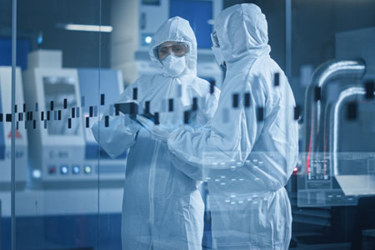Applying Appropriate Limits In Cleanroom Monitoring In Drug Manufacturing

Choosing the appropriate monitoring technique is crucial for maintaining contamination control in cleanrooms. These specialized environments require stringent standards to ensure the integrity and safety of products, particularly in industries with the most hygiene-critical applications, like pharmaceutical manufacturing.
To reduce contamination risks and achieve the highest level of cleanliness, strict regulatory standards are applied for cleanroom monitoring. These regulations, such as ISO 14644-1:2015 and the European Good Manufacturing Practice (EU GMP) Annex 1, provide a framework for better environmental control.
The principles within ISO 14644-1:2015 and EU GMP Annex 1 serve as crucial benchmarks for cleanroom monitoring and provide a comprehensive framework for managing airborne molecular contamination, which is vital for maintaining pharmaceutical manufacturing process integrity. These documents form a cohesive set of guidelines that facilitate effective contamination control strategies in cleanrooms. By adhering to the principles of ISO 14644-1:2015 and EU GMP Annex 1, pharmaceutical manufacturers can ensure their facilities meet product safety and quality demands.
This article explores these standards in depth, including their criteria, implementation challenges, and impact on pharmaceutical manufacturing. Learn about cleanroom classification, the importance of standardized practices in ensuring product integrity and patient safety, and how to apply monitoring limits in cleanroom environments.
Get unlimited access to:
Enter your credentials below to log in. Not yet a member of Bioprocess Online? Subscribe today.
